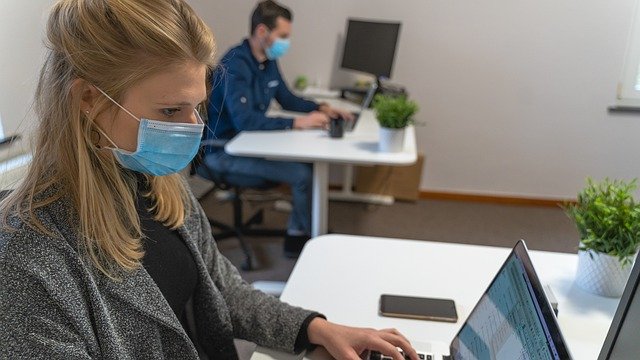What Does a Return to the Office Look Like?

Things are looking up when it comes to pandemic news, which dominates our lives everyday. Half of U.S. adults have received at least one vaccine dose and over a third of Illinois residents are fully vaccinated.
For businesses, this means that it’s becoming safer for employees to return to the office. But do they really want to? After all, we’ve gotten used to remote work, and all of its conveniences. At the same time, we’ve also experienced the inconveniences, and in a stroke of irony, working from home has created less work/life balance and more employee burnout.
Suddenly, returning to the office sounds appealing, and below we examine the reasons for that.
Commuting Doesn’t Sound So Bad Now
One of the biggest bug a boos about reporting to the office is time lost during the commute. Traffic in Chicagoland can be terrible, and train and bus delays are equally frustrating, so what is there to like about a commute?
The ability to decompress.
Time lost commuting has been replaced by more Zoom meetings, and if you’re a parent of grade school children, more time, well parenting, not to mention teaching if your kids are remote-learning. CNBC cites a recent study on what employees have missed most after a year of stay-at-home orders and were surprised to find that 16% said they missed their commute.
Going to the Office Can Be Better For Employee Mental Health
This is a big one.
It’s no surprise that the pandemic has wreaked havoc on our mental health, as we’re seeing higher rates of depression, anxiety, and suicidal thoughts, a matter that more employers are addressing. Earlier this year, the Kaiser Family Foundation published a report that found that these symptoms are more prevalent among younger adults just entering the workforce.
Tsedal Neeley, a professor of business administration at Harvard Business School, put it best:
“The phenomenon that we’ve seen in the last 12 months … I call this hyper-productivity gone wrong. We’re working so much, we’re producing, we’re producing, we’re substituting our commute times with more hours throughout the day and eventually we hit a wall. We are stressed. We are burned out and we start to feel negative about our work, our teams, and our organization.”
Enhanced Collaboration & Coordination
Absence makes the heart grow fonder, or as Mötley Crüe famously sang, “You don’t know what you’ve got till it’s gone.” The same study cited by CNBC also found that 61% of employees miss in-person workplace conversations. As you transition staff back into the office who are eager to be back, take this chance to foster an environment for employees to streamline their communications, develop new ideas, and re-engage with their team and the rest of the workplace.
We had no time to transition into pandemic life but seemingly have all the time in the world to transition out. It’s a tightrope to be sure, which means it’s in your best interest to leave room for flexibility. According to data collected by Harvard Business School, 70% of employers prefer to have staff back in the office, while 61% of remote workers want a hybrid model.
For those employees who re-enter your office doors, you have a golden to give them a nice homecoming.
If you liked this post, please subscribe to our blog. You can opt out at any time. To learn more about FocusHR and for updates, please like our Facebook page and follow us on LinkedIn.





